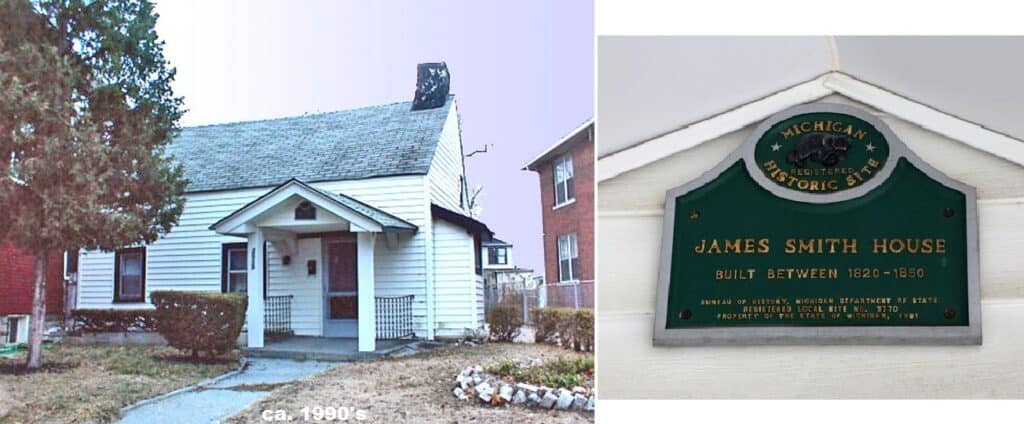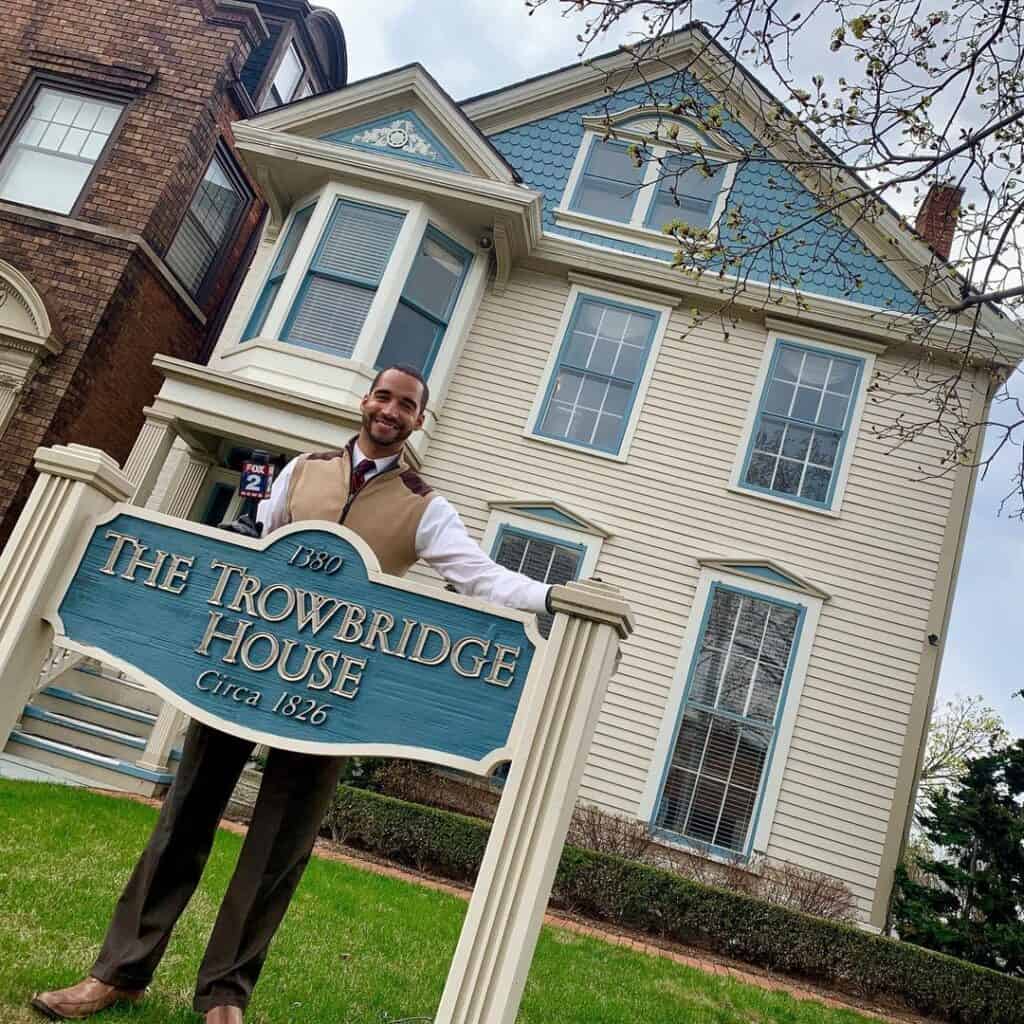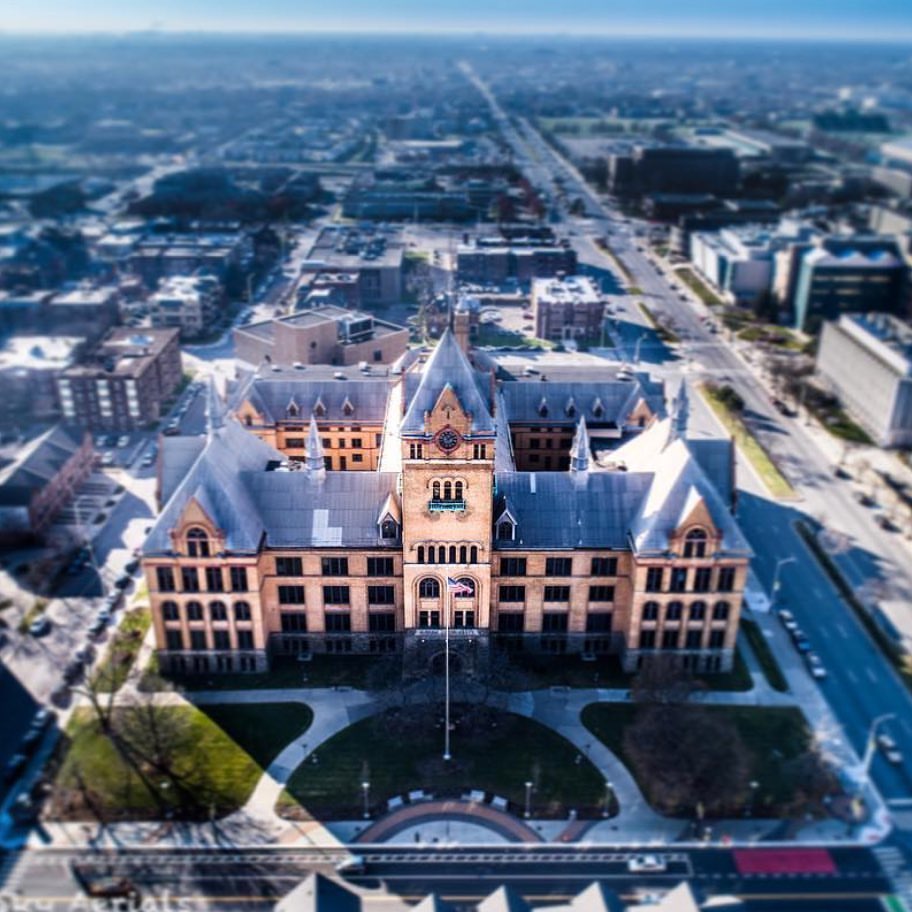The 8 oldest buildings in Detroit (and what you’ll find inside)
From indigenous burial grounds dating to 1000 C.E. to music halls-turned-restaurants, the buildings of Detroit are rich with history that lives on.
As the fourth-oldest established city in Michigan (preceded only by Sault Ste Marie, St. Ignace, and Mackinaw), Detroit is an area rich with history. Detroit — which means “strait” in French — was first founded in 1701 and incorporated as a city in 1806.
Detroit’s early incorporation makes it one of the oldest cities in the entire Midwest and as such, it has plenty of interesting buildings, stories, and people along the way. In fact, Detroit is the city that more Michiganders call “home” than any other city in the state, so you know it has some stories to tell.
Many of Detroit’s stories live in the walls of the buildings that have sheltered its inhabitants, making the city their home, their workplace, and the center of their lives. Here are some of the most interesting and oldest buildings in Detroit, along with what they house today.
1. The James Smith Farm House, the oldest and only log cabin in Detroit

Once the oldest cabin in Detroit and the second-oldest home in the city, the James Smith Farm House fell on some hard times in its modern-day state. The 500-square-foot former farmhouse was built on Detroit’s west side sometime around 1830 and is now hidden and tucked away in a neighborhood filled with decaying homes.
The 2009 Clements Street home was built by pioneer farmer James Smith, who spent his life farming the ground and living in the cabin among early Detroit dwellers, back when the city was no more than a cluster of people near the river.
Smith is said to have won a prize for his butter at the 1854 state fair, but not much else is known about Smith. His cabin seems to have taken after his footsteps — just plodding along and surviving without much fanfare. The original log structure was still visible under deteriorating vinyl siding, and the haphazard chimney is a testament to a time before.
Despite its designation as a Michigan Registered Historic Site, the farmhouse has sat unoccupied for decades as an abandoned building, home to squatters and graffiti. It’s now believed to be the only remaining log cabin left in Detroit. It went up for sale in 2019 for $29,000 and is currently said to be undergoing renovations.
2. The Charles C. Trowbridge House, the oldest documented building in Detroit

Built not long before the James Smith House, the Charles C. Trowbridge House at 1380 East Jefferson Ave. was constructed in 1826 and is Detroit’s oldest documented building. The Charles C. Trowbridge house is so old that it predates even Michigan itself, which became an official state in 1837.
Trowbridge was hired as a U.S. Deputy Marshall for the government at the age of 19, which is where his long and prosperous career began. It’s recorded that Trowbridge learned several indigenous languages and served as the official interpreter between the Michigan Territory (remember, Michigan wasn’t a state yet!) and the indigenous peoples.
The house was built for the sum of $2,500 on land from a French land grant to Charles Chauvin that Charles Trowbridge then purchased. Trowbridge built the house for himself and his bride, Catherine Whipple Sibley, who was the daughter of the first mayor of Detroit. Trowbridge went on to have a career in banking and development. When he originally built the house, it was only accessible via the river, so he had to take a boat to go into the town.
You could say that Trowbridge got his money’s worth from the house, seeing as he lived in it for 56 years until he died in 1883. The house stayed in the family after his death, became a rooming house during the Great Depression, and today is used as private office space.
3. Barracks of Fort Wayne, the oldest standing military structure

The Barracks of Fort Wayne have a history of their own as an important Michigan military base, training volunteer and artillery Michigan troops during the Civil War and housing segregated African American troops during World War I. But the land that Fort Wayne sits on also has its own unique and rich history — it originally served as a sacred burial ground for people of the Late Woodland culture, dating back as far as 1000 CE.
The land — situated near the shores of Ontario and the Detroit and Rouge Rivers — saw the erection of around 19 earthwork mounds over centuries that, unfortunately, were all destroyed and looted. These mounds contained indigenous artifacts and items unique to burial practices.
The primary central burial ground was destroyed by the U.S. Army to construct Fort Wayne from 1842 to 1845. The last burial mound was excavated twice and recovered artifacts were sent to Harvard’s Peabody Museum and U of M’s Museum of Anthropology. The mound — which still contains at least two burials — still exists near Officers’ Row on the fort grounds.
For some time, a Woodland Indian Museum was operated near the mound, although it is currently closed. Fort Wayne is still open to the public and hosts many events as well as tours.
4. The oldest parish congregation, Sainte Anne de Detroit

Not only is Sainte Anne de Detroit the Motor City’s oldest congregation, but it also happens to be runner-up as the oldest operating Catholic church family in the entire country.
The original church was a log cabin structure built by French explorer Antoine de la Mothe Cadillac and his party of 102, which included two Catholic priests. They dedicated the log cabin chapel on July 27th, 1701, the feast day of St. Anne, the mother of Mary and the grandmother of Jesus.
The church itself has undergone a few changes throughout history, first as a stone church and then rebuilt as the present-day cathedral in 1886. The newest cathedral still contains remnants of its past, including the oldest remaining stained glass in Detroit. In 2020, Pope Francis designated Ste. Anne’s a minor basicalla, making it one of only 86 churches in the U.S. and the third in Michigan, to receive the title.
Another historic fun fact about St. Anne’s? One of its most famous pastors, Fr. Gabriel Richard, actually penned Detroit’s motto, “Speramus meliora; resurget cineribus,” (“We hope for better things; it will rise from the ashes”) after the Great Fire of 1805.
5. The oldest Detroit market, Eastern Market

Photo courtesy of Eastern Market via Instagram.It may have started out as a simple meeting spot for farmers and tradesmen to sell hay and lumber, but The Eastern Market of Detroit quickly evolved into a historic landmark. Originally located in Cadillac Square, the Eastern Market expanded in 1891, then 1922, and 1929. It exploded in growth and popularity after WWII as wholesale food sellers became more common.
Today, the Eastern Market is 43 acres and includes a six-block public market and 80 different structures. It’s the largest open-air flowerbed market in the entire United States, as well as the largest historic public market district in the country. It operates as a summer market, year-round market, and wholesale nightly market, as well as online.
6. The oldest public high school in Detroit, Central High School

Central High School opened in 1896 and is Detroit’s oldest public high school as well as the second-oldest public high school in all of Michigan. The high school was designed by famed Detroit architectural firm Malcomson & Higginbotham in the Romanesque Revival style and the main building consisted of three stories of yellow brick that take up an entire city block and is marked by a signature four-faced clock tower.
The school was actually the site of the start of Wayne State Medical School, with 25 students graduating from the first one-year “premedical course” held in its halls. Part of Central High School (the part with the infamous clock) now stands as Wayne State University’s Old Main. The rest of Central High School still proudly operates as a public high school and has over 380 students enrolled.
7. The oldest Detroit restaurant, Amore da Roma

First opened as the Roma Cafe in 1888, the original building now operates as Amore da Roma, continuing the tradition as an Italian eatery under Executive Chef Guy Pelino, who revamped and reopened the restaurant in 2017.
The restaurant first originally only served vendors of the Eastern Market, but today is open to the public and serves favorites like housemade fettucini alfredo and baked cannelloni.
8. Wright-Kay Building, one of the oldest high-rise buildings in Detroit

The Wright-Kay building is debatable as the oldest high-rise building in Detroit. Although the Hammond Building officially opened in 1890, it underwent additional external work, while the Wright-Kay Building was fully opened in 1891.
The Wright-Kay Building is one of the most beautiful high-rises in Detroit and is an example of the Queen Anne-inspired work done by architect Gordon W. Lloyd, standing tall with brownstone brick flanked by cast-iron construction details.
The building first served as a music hall by the F. J. Schwankovsky Company and even broadcast outdoor brass band concerts through the sixth-floor balcony. The F. J. Schwankovsky Company stopped operating in 1910 and the building was purchased by the Wright-Kay Jewelry Company. The Wright Kay Jewelry Company had its “WK” insignia etched into the glass windows of the buildings, where they can still be seen to this day.
The building is now under private ownership and operates as the Wright & Co. restaurant.


